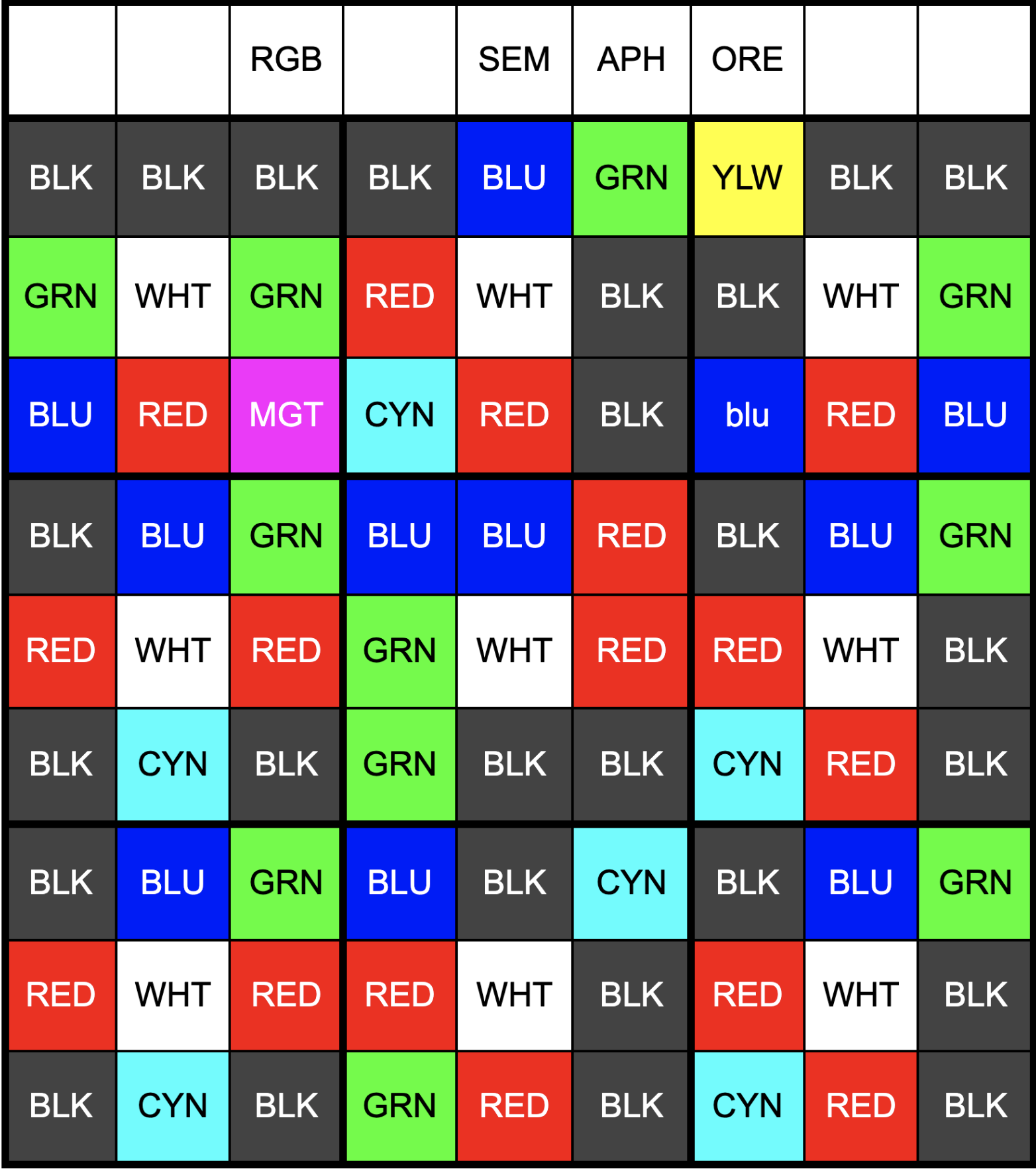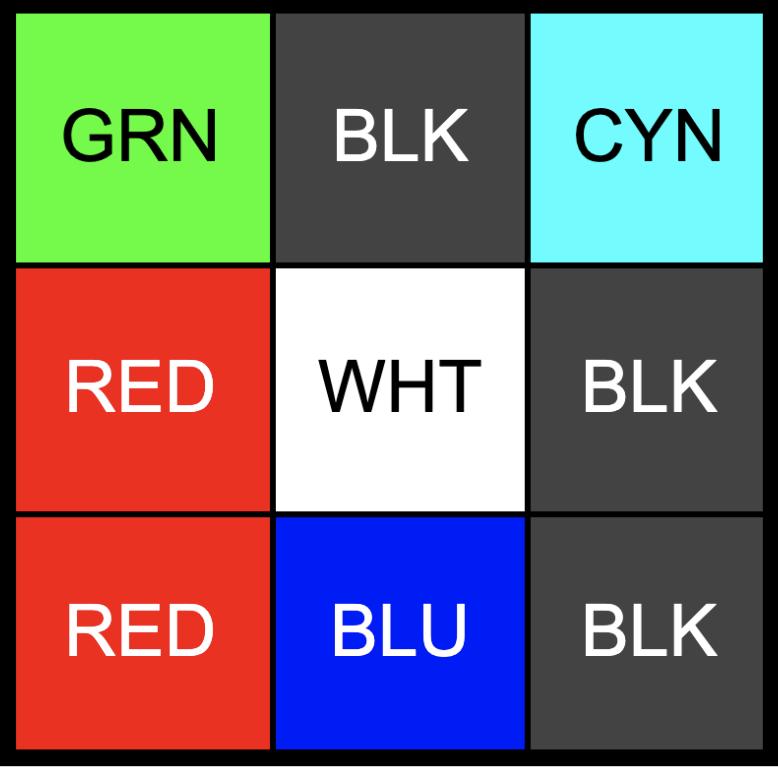90 Shades of Black
Though the grid looks pure white and black at first glance, the squares are actually a polychromatic collage of different dark shades, and some of the lines are grey. Except for a few true-black squares, each dark square had red, green, and blue values between 1 and 26, and their color could be read as a three-letter string. Most of these denoted colors, like BLK, WHT, RED, GRN, or BLU. Recoloring squares accordingly, we get the following grid:

The top row reads RGB SEMAPHORE. Noting that yellow is red + green, cyan is green + blue, magenta is blue + red, and white is red + green + blue, each 3x3 subgrid could be decomposed into a superposition of three red, three green, and three blue squares, and each color could be independently read as a semaphore letter. Here’s the upper-left subgrid as an example:

Each subgrid gave a color just like each square, suggesting we should view the subgrids as squares in a grand 3x3 metagrid. Translating every subgrid (and discarding the instruction row) gave this metagrid:

Decoding the semaphore like before, this gives HUE, the final answer.